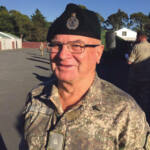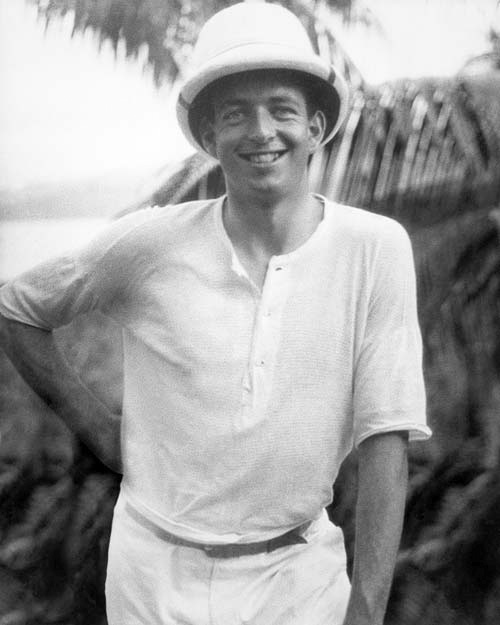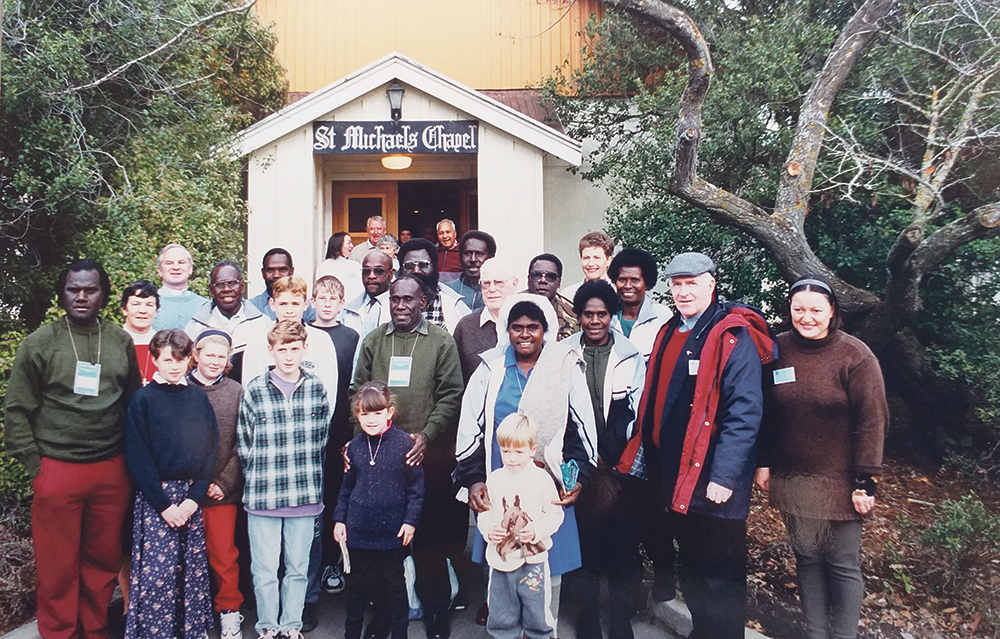WelCom April 2021
Te Rā o ANZAC, 25 o Paenga-whāwhā 2021, He Rā Whakamaharatanga a Motu
New Zealand-sponsored peace talks between Bougainville groups and at times the Papua New Guinea government were held on New Zealand navy vessel the Endeavour (1990), at Burnham military camp (July and October 1997) and Lincoln University (1998).
For this year’s Anzac Day, Army Reserve Chaplain Brian Fennessy ED, RNZChD, provides a reflection about the Bougainville peace talks held at Burnham during 1997. He writes from the perspective of those at the Catholic chapel at Burnham ‘who had quite a bit to do with those behind the scenes with the delegates at the peace talks’.
Burnham, also known as Burnham Camp, is the largest army base in the South Island. It is located 28 kilometres south of Christchurch on the Canterbury Plains. The peace agreement signed after the second round of Burnham talks in 1997, was an important step towards resolution of the Bougainville conflict.
A humble photo – through a Catholic lens

Chaplain Brian Fennessy
The delegates for the Bougainville peace talks arrived at Burnham during July 1997.
Someone in Wellington realised a pōwhiri was important, but they failed to appreciate the arrival of the delegates would be on a frosty winter’s morning. The pōwhiri was held on the 2/1 Battalion Parade Ground; the delegates had only been in New Zealand for a couple of hours – now they had to sit in the cold.
While I was leading the prayer, I noticed soldiers giving out blankets, balaclavas, gloves, and smocks to the Bougainvilleans.
The delegates must have wondered what sort of country they were visiting for their peace talks. It was certainly a welcome they would remember.
A significant number of the delegates were Catholic, so there was a good number who joined the St Michael’s Chapel community for Sunday Mass. They were seated in their groupings: Bougainville Interim Government; Bougainville Transitional Government; Bougainville Revolutionary Army; and The Resistance.
It was during the ‘Sign of Peace’ that the delegates, and the 50 or so regular parishioners of St Michael’s, mixed and mingled. It was perhaps the most meaningful and significant ‘Sign of Peace’ I had shared in. It was an indicator of their intentions to make the most of the peace talks.
It was our regular custom to have a ‘cuppa’ after Sunday Mass.

At the back of the chapel there was a noticeboard. By chance, one of the posters on the noticeboard was about encouraging parishioners to pray for vocations to the priesthood. The poster included a photograph of Fr Emmet McHardy, who had been a missionary in Bougainville from 1929 to 1932.
Over the cuppa, one of the delegates – his name was Chief Linus – came up to me, pointed to the poster, and said ‘that is Fr McHardy – he baptised me’.
Somewhat amazed, I replied that many older New Zealand Catholics knew of the life of Fr McHardy and his work in Bougainville.
As a young priest, Fr Emmet McHardy had left New Zealand and travelled to Bougainville. Within four years, he had returned to New Zealand due to TB and died in 1933, aged 28. After his death, his sister published a book entitled: ‘Blazing the Trail’ which was a collection of his letters that spoke of the intrepid life of a missionary in Bougainville. Published during 1935, the book was a ‘best seller’ among the Catholic community.
Here at Burnham, at the beginning of the peace talks, a significant point of contact had been made.
Many of the delegates appreciated the link between New Zealand and Bougainville symbolised by the photo of Fr Emmet McHardy.
The comment is often made that ‘it’s a small world’. Here in Burnham, it was a reality. The photo of Fr Emmet McHardy must have been a sign of ‘Blessings’ for the Catholic delegates as they commenced the peace talks.
Over the following Sundays the delegates took an active part in Sunday Mass – contributing to the music and sharing in the Readings in pidgin.
At one stage, one of the delegates, Fr Ben His, said, ‘we are going through a difficult period’. In response we commenced weekday Masses to pray for success for the talks.
On another occasion, I arranged for another priest, Fr Dan Doyle, who spoke pidgin, to visit Burnham to assist with hearing confessions – a meaningful celebration in the midst of the peace talks.
By the end of the peace talks, its success was witnessed by the delegates and the parishioners intermingling at Mass; no longer were the delegates in their factions, but together as people of Bougainville.

The community at St Michael’s Chapel became involved in the ‘unofficial support’ of the peace talks and advertised throughout Christchurch parishes for clothing, educational and religious articles. There was a great response over the three weeks and the gifts were divided, a few days before the conclusion of the talks, among the various communities from Bougainville.
After the delegates had returned home, the St Michael’s community sent several other ‘care packages’ to Bougainville. These included educational material and stationery for about 150 children.
I often wondered what effect the ‘behind the scenes networking’ from St Michael’s Chapel had had on the peace talks. Their friendship was a visible reminder that those who keep ‘the Home Fires Burning’ can contribute to the ‘big picture’.
In September 1997 there was a second round of peace talks when the young soldiers of the various factions came to Burnham to have follow-on talks. Similar support was given by the parishioners of St Michael’s.
In 1999 I was fortunate to deploy to Bougainville with the Peace Monitoring Group. During my time in Bougainville, I met many of the delegates from the Burnham peace talks, including Chief Linus. I met Chief Linus at Sunday Mass, for about 1000 people in a small town called Piano, near Buin.
After Mass I accompanied a patrol to his village. Here, in the bush, close to Chief Linus’ village, was a wreck of a RNZAF Corsair that crashed during WWII. One could still read the registration on the lee side of the fuselage. The propeller was a feature of the entrance at the local village school. Once again, ‘it’s a small world’.
The reconciliation and hopes that were formulated at the Burnham peace talks are enduring. Twenty-four years later, as we observe Anzac Day, it is worthwhile to remember the contribution of ordinary New Zealanders, and the contribution of the NZDF, to enhancing peace in our region of influence.
New Zealand can be proud of its contribution, under the leadership of Don McKinnon; I believe the Catholic community of St Michael’s Chapel can also be proud of their sharing in these important days.
Chaplain Brian Fennessy ED, RNZChD, is parish priest of Selwyn Parish, Lincoln, and an Army Reserve Chaplain.
Māori Ode of Remembrance
The Māori version of the Ode of Remembrance was changed in 2015 to better recognise the service of women in the military. Announcing the change the Defence Force said the first line, ‘E kore rātou e koroheketia’, was being changed to ‘E kore rātou e kaumātuatia’.
Whereas the word ‘Koroheketia’ means to grow to be an old man, ‘Kaumātuatia’ refers in most iwi to both males and females growing old.
Then-Chief of the Defence Force Lieutenant General Tim Keating said the change was to ensure the service of all those who have served New Zealand is fully recognised.
‘Women have served, and in some cases made the ultimate sacrifice for their country, in major wars, conflicts and peacekeeping operations New Zealand has been involved in since World War One.’
The ode is recited at commemorative events including military funerals, and each evening at RSAs around the country. It is typically followed by one minute’s silence.
The Ode of Remembrance
They shall grow not old, as we that are left grow old:
Age shall not weary them, nor the years condemn.
At the going down of the sun, and in the morning,
We remember them.
E kore rātou e kaumātuatia
Pēnei i a tātou kua mahue nei
E kore hoki rātou e ngoikore
Ahakoa pehea i ngā āhuatanga o te wā
I te hekenga atu o te rā
Tae noa ki te arangamai i te ata
Ka maumahara tonu tātou ki a rātou
Ka maumahara tonu tātou ki a rātou
Source: Te Ao Māori/RNZ